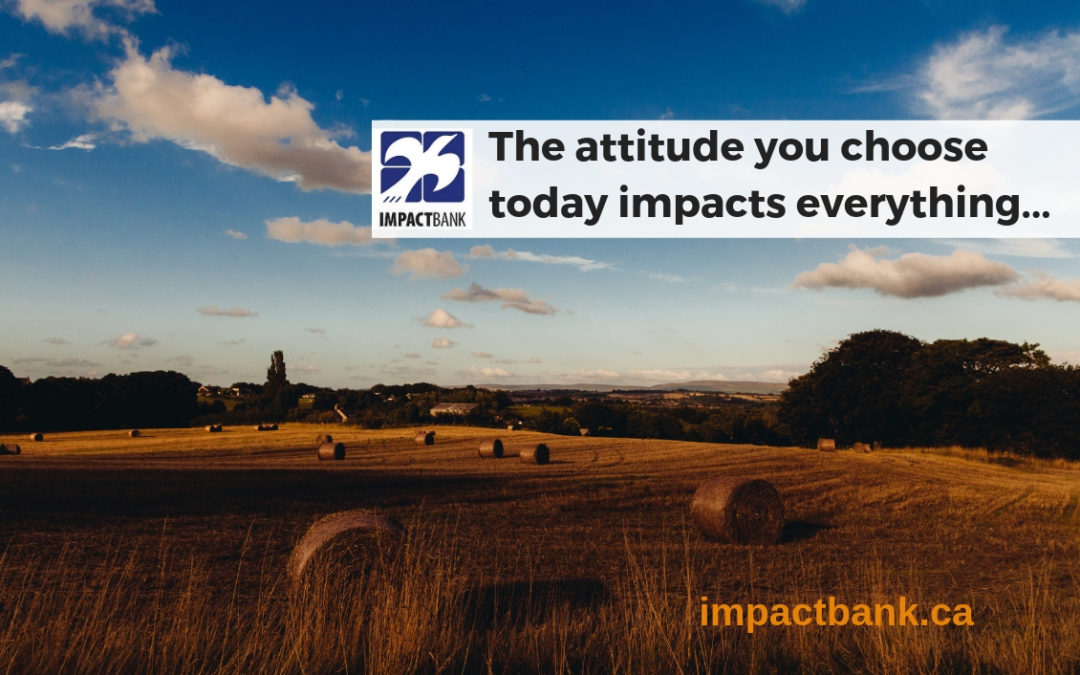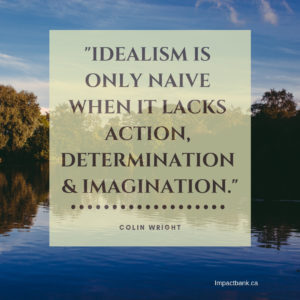Idealism is an attitude and attitude is a choice. Your success is determined by your attitude and shaped by your mindset, revealing itself in every other choice you make through the day.
Pragmatism is also an attitude. Ask yourself: when do you choose a pragmatic or an idealistic thinking style? There are those who believe you’re driven by one of these “attitudes” or the other. Essentially, you have the capacity to choose. Additionally, you’ll increase your overall success in your life and career, when you become adept at choosing.
In this week’s podcast episode I take a high level view of the importance of balancing your attitude between the idealistic and pragmatic ways of thinking. Additionally, I share a brief description of an exercise you can use to cultivate the idealistic mindset to generate possibilities. This week’s newsletter digs into a real example of a client who came to a coaching conversation wanting specifically to explore the dichotomy between the idealistic and the pragmatic. He concluded that, as a leader, he needed to value both. After arriving at this insight, he revisited his options and decision differently. Furthermore, he found his perspective and options expanding when adopting a more idealistic, purpose-focused attitude. I share a bit of his story as my Instagram video on December 12th. This blog synthesizes and expands on the topic and the exercise described in the podcast.
Idealism & Pragmatism: the Dance
My clients’ response to different affirmations is interesting to observe and reflect back to them. On the whole, there’s an impact when acknowledged for demonstrating thinking that is more idealistic or pragmatic. For the record, I don’t always use these exact terms but I find people tend to respond to one side of this seeming dichotomy or the other. It’s like a dance. Ordinarily, it’s the best or most natural dancers who can shift dance moves seamlessly, adding a bit of animation into the dance itself in the process. There’s a reason I’m talking about this a few weeks after exploring nuance.
In short, you’ll find your best options by examining your dance. Get more comfortable engaging in the nuance of your dance. You’ll be more skilled in navigating and growing a successful career. Moreover, dancing between the idealistic and pragmatic is just one way of many.
The Story
One of my clients is a senior leader in healthcare. He expressed confusion and frustration about how he didn’t fit the culture. “I care about the stakeholders – all of them”, he said one day. “I just think caring about them means being reasonable and practical.” Overall, this client struggles with a perceived conflict between expressing caring (idealistic) and being data-driven (pragmatic). At least, that’s what he thought initially.
In discussing the issues as they arise and framing them thoughtfully, it became clear he was struggling more with inner turmoil. Altogether, he wants to be seen as pragmatic and “hard-core” while delivering the care needed in a people-centric manner. Our exploration revealed that he found many people in his work circles to be “flaky” and “soft” (his words). In essence, it became clear these judgmental descriptions simply created a wall between valuable perspectives and his thinking processes. In short, it insulated him.
Additionally, we discovered he experiences inner anxiety about the line of work he chose. He doesn’t have the earning potential or status his older brother enjoys in his work, leading to feelings of inadequacy. Even he was impressed when he had this insight. Revisiting the reason he chose this path into healthcare administration, his desire to be of service, opened the door to this interesting awareness. More over, realizing where the conflict was coming from, almost immediately, shifted this client’s attitude toward his work and the stakeholders he served. He didn’t become more idealistic. All in all, he was able to restore it as a valuable aspect in his thinking and decision-making process, when realizing why he’d rejected that part of himself.
The Tip
Balancing your idealism with a touch of pragmatism is often the most productive attitude to adopt. Why? Ordinarily, you’re operating with guidance from a north star when your decision-making is focused on a principle or mission, It maintains your focus on your goal and it helps you get back on track when you lose your way.
The tip this week is: when you practice a more idealistic and optimistic mindset, your pragmatic brain is able to see and act meaningfully on more innovative and unique solutions to problems that have, so far, felt intractable.
The significance of finding balance is depicted in the quote from Colin Wright (see image to the right). A mission, no matter how lofty or ideal or principle based, is only meaningful when thoughtful, pragmatic action is employed. Moreover, it helps when backed up with grit, curiosity and creativity.
As a matter of fact, the mission of the idealist is making a difference in the world. All things considered, doing the work to make it happen, requires a willingness to be concrete and disciplined in action.
Generating an Idealistic Attitude
I love it when I’m described as generative. Why? In short, because I believe this is the best way to manifest a superior blend of idealism and pragmatism. Being generative is to add value. An idealistic attitude is one that’s hopeful, built on a north star that’s both compelling and inspiring. Doing the work to find this sweet spot of balance requires focused energy.
What’s In It For You?
The Exercise
- For 2 minutes every evening write a paragraph describing the best, most productive OR positive experience of the day. Did you negotiate a great deal. Were you part of a very productive conversation or meeting? Did you have a strong and meaningful insight that allowed you to solve a significant problem? Choose whatever stands out as a significantly productive or positive element of your day. As you write about it, be descriptive with details. What did you see, feel, or think about as it happened or now, as you look back?
- Next, circle the three words in your paragraph that are the most hopeful, visionary or optimistic. Are they “feeling” words or are they visual queues? Circle whatever really stands out for you. Keep all of the week’s recorded paragraphs together.
- At the end of each week, note emerging patterns in the words you’ve circled. Go through all seven days worth of paragraphs simply noticing the words you circled. Reflect briefly on any patterns that emerge week over week. In addition to witnessing the patterns in the words themselves, notice how your language evolves or remains similar. Are your descriptions becoming more hopeful as the week goes on? Are you noticing how your attitude is shifting or expanding? Is this exercise helping you see options or hear those described by others differently? Perhaps, with greater openness?
This simple daily exercise is a small start to opening up your perspective. Additionally, it welcomes a more optimistic mindset. Next week we’ll be exploring disputations which is part of shifting your attitude. In my system, and with my one-on-one clients, we use a variety of exercises to explore and shift attitude and mindset.
How We Can Walk together…
What’s your experience with idealism or optimism? Are you someone who has fought against it because it feels less concrete and not serious enough? Perhaps you’re someone who prefers to feel grounded and practical and the thought of being idealistic in any way is repelling? There is value in holding onto your pragmatism. In essence, consider expanding your perspective slightly and slowly. Find ways of playing with a more hopeful, mission-oriented way of thinking. If, however, you are more apt to engage the idealistic easily but, struggle to balance it enough with action, determination and resilience, there’s work for you to do too. The answer is balance and choice.
If you haven’t listened to my signature story, it’s available on the player below, HERE OR you can click over on my website BIG WHY Story on the services pages – while I started from a place of idealism and you’ll hear it in the first story about how I stood my ground until I was fired. I was one who had to learn to balance my idealism – doing the right thing – with pragmatism.
Want to find a clear path to success on your terms? We’ll craft a personalize strategy that puts you on a progressive journey.
Don’t feel valued for your unique perspective at work? A great path is there for you, we’ll discover the sign posts together.
Want to learn to #unpack4impact?
Once you have the skills to unpack the emotions and barriers and triggers and mindset challenges with the skills in my system, you’ll begin to see the impact in your career and you’ll find what matters most to you.
My goal is to make my system accessible and affordable. There are many ways you can engage with me. CLICK below on at least one to LEARN more or to BOOK time with me:
- on my website in the services section
- and register by checking out the Eventbrite page
- by registering for an ASK ROX RoundTable… there are more dates added all the time – it’s COMPLIMENTARY and a chance for you to get to know me.
- Contact me with questions OR BOOK a complimentary exploratory conversation 15-20 minutes.
- Learn More on my services page.
- Book me to speak at your conference or to a group in your organization.



